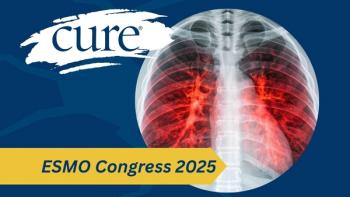
Earlier is Better: Managing Side Effects from Immunotherapy in Lung Cancer
Key Takeaways
- Immunotherapies present unique adverse events, including organ inflammation, necessitating early detection and management to prevent severe complications.
- Nurses are integral in recognizing and managing immunotherapy side effects, ensuring timely intervention and patient safety.
CURE sat down with Suresh S. Ramalingam to discuss important considerations for patients, caregivers, nurses and physicians when treatment with an immunotherapy begins.
Though immunotherapies can provide significant survival benefit for patients with lung cancer, implementing the agents in practice is still unchartered territory for many physicians.
CURE sat down with Suresh S. Ramalingam to discuss important considerations for patients, caregivers, nurses and physicians when treatment with an immunotherapy begins.
Ramalingam is a professor of hematology and medical oncology at Winship Cancer Institute of Emory University.
What should patients know about adverse events associated with immunotherapies?
Both physicians and patients are very familiar with adverse events associated with traditional chemotherapy and now oral targeted therapy. With the advent of immunotherapy in oncology, we are now facing a different set of adverse events than before. For instance, with immune checkpoint inhibitors, some of the treatment-related adverse events are directly related to immune activation against normal tissues. This occurs in the form of lung inflammation, thyroid inflammation, colon inflammation, and so forth. What we know from observation so far is that these adverse events can be managed better if we are detecting them early. If they become more advanced and severe, that can lead to treatment interruptions, hospitalization and more aggressive treatments specifically towards managing those side effects.
We need to be vigilant for what these side effects might look like. For example, inflammation of the colon would manifest as diarrhea or bloody stools, usually. If patients notice this, it’s important they bring it to the attention of their care providers as early as possible. Based on the frequency of the diarrhea, the physician and his or her team can decide whether it’s related to the immunotherapy or not. In patients with lung cancer, we might see inflammation of the lungs — this is called pneumonitis. This happens, thankfully, in a very small percentage of patients. This manifests in the form of shortness of breath, so it can be difficult to differentiate from the symptoms of lung cancer. Nevertheless, it’s important that patients let their physicians know if they experience more shortness of breath while on these therapies. Skin rashes, too, can present. Inflammation of the endocrine glands can present as severe weight loss, fatigue or constipation.
As people are started on immunotherapies, we, as physicians, need to do a good job of explaining to patients what to expect. We need to have patients as partners in the care team — knowing about these side effects sooner can greatly impact outcomes.
What’s the role of the nurse?
More often than not, when patients call to report that they’re experiencing symptoms, it’s nurses who take these calls. They’re the first ones to think about how to manage side effects. They need to be educated.
They’re an integral part of the team. It makes a big difference if a nurse can quickly recognize symptoms, alert the medical team and appropriately inform a patient.
There are several immunotherapies approved for the treatment of patients with melanoma. Are there unique considerations for patients with either disease?
Immunotherapy is an exciting addition to cancer care as a whole. It’s been studied in melanoma for a long time now and even has been used for a few years. In lung cancer, immunotherapy is much newer. There are some important differences we need to keep in mind when treating melanoma patients and lung cancer patients.
Melanoma patients are typically more fit and younger. They’re able to tolerate immunotherapies better than lung cancer patients. In melanoma, combinations of immunotherapies are given now. Agents that target CTLA-4 and agents that target PD-1/PD-L1 are given as combination therapies.
Lung cancer patients tend to be older and have concomitant medical issues like diabetes, hypertension and vascular problems. In lung cancer, combinations are being studied but they’re not given routinely. The agents we give are PD-1/PD-L1 inhibitors — by themselves, they’re not as difficult to tolerate as some combinations.
Do multiple adverse events typically present at the same time?
Fortunately, no. It’s not something we see very often.
What else should patients and physicians be made aware of before starting treatment with an immunotherapy?
Immune checkpoint inhibitors have the ability to cause a rejection in patients who have received organ transplants. If we have a patient such as this, we would not recommend that they receive PD-1/PD-L1 inhibitors. We would want the immune system to be suppressed so the graft organ can survive, but we’re activating the immune system to kill the cancer. It’s an ideal environment for the organ to be rejected.
Why is it important for a patient to report any side effects, even if they may be low-grade?
The experience with immunotherapies in lung cancer has been very positive, overall. These agents are well tolerated and adverse events tend to be much lower than what we see with chemotherapies. Mild (grade 1-2) adverse events are seen in about 10 to 20 percent of patients while more severe forms (grade 3-5), ones that require hospitalization, are seen in 5 to 6 percent of patients.
When it comes to managing adverse events, oftentimes, early recognition leads to early intervention and better outcomes. We, as physicians, need to be made aware of all forms of toxicity.





